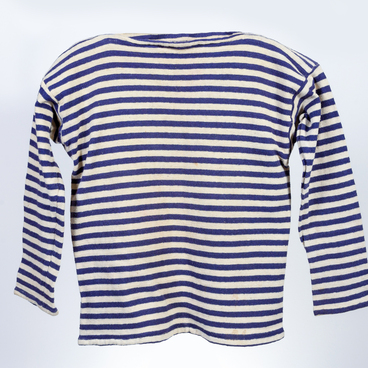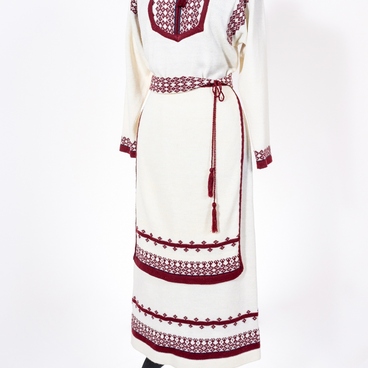“Start-3” black-and-white TVs were produced from 1959 to 1963 at the Moscow Radio Engineering Plant. Not only did they receive TV programs but they could also play gramophone and magnetic recordings from external devices. Such TV operated on the standard electrical network with a voltage of 127V or 220V.
The image size of that model was 220×290 mm. The TV housing was made of molded plywood, which was grained like natural dark wood. There was a plastic blind panel hiding the front speaker under the screen. The volume was sufficient for watching TV comfortably in an ordinary room in an apartment or a house.
Several main control handles were located on the blind panel that allowed to switch channels and adjust volume, clarity, and receiving frequency. Additional regulators that allowed to set the frame frequency, brightness, contrast, and vertical image size, were in the niche on the right side of the TV set.
The viewers could use either the TV speakers or headphones with the “Start-3” TV set. The headphone plug was inserted into a special connector at the back of the TV. Then the function switch was moved to the far right next to a headphone sign.
The TV could play radio stations that used ultra-short waves. To do that, the switch was moved to the FM position; the frequency was set manually. If necessary, it was possible to record the soundtrack of TV or radio programs: a tape recorder or an electric phonograph was connected to the TV set, and the user could choose either the FM or the TV speaker mode.
The design of the “Start-3” model was changed a little in 1964, and the new one was called “Start 3-M”. The updated model was produced until 1967. It was sold in the USSR and also exported to Bulgaria, Hungary, Poland, Romania, and Czechoslovakia. The Moscow Radio Engineering Plant produced other models of black-and-white TV sets such as “Luch”, “Yunost”, and “Temp”. Such models as “Record”, “Rubin”, and “Gorizont” were quite popular in the 1970s.
The image size of that model was 220×290 mm. The TV housing was made of molded plywood, which was grained like natural dark wood. There was a plastic blind panel hiding the front speaker under the screen. The volume was sufficient for watching TV comfortably in an ordinary room in an apartment or a house.
Several main control handles were located on the blind panel that allowed to switch channels and adjust volume, clarity, and receiving frequency. Additional regulators that allowed to set the frame frequency, brightness, contrast, and vertical image size, were in the niche on the right side of the TV set.
The viewers could use either the TV speakers or headphones with the “Start-3” TV set. The headphone plug was inserted into a special connector at the back of the TV. Then the function switch was moved to the far right next to a headphone sign.
The TV could play radio stations that used ultra-short waves. To do that, the switch was moved to the FM position; the frequency was set manually. If necessary, it was possible to record the soundtrack of TV or radio programs: a tape recorder or an electric phonograph was connected to the TV set, and the user could choose either the FM or the TV speaker mode.
The design of the “Start-3” model was changed a little in 1964, and the new one was called “Start 3-M”. The updated model was produced until 1967. It was sold in the USSR and also exported to Bulgaria, Hungary, Poland, Romania, and Czechoslovakia. The Moscow Radio Engineering Plant produced other models of black-and-white TV sets such as “Luch”, “Yunost”, and “Temp”. Such models as “Record”, “Rubin”, and “Gorizont” were quite popular in the 1970s.



